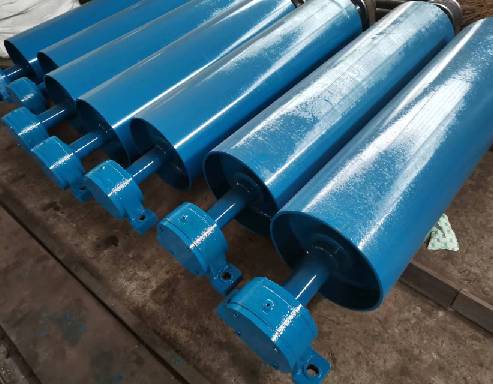 Afrikaans
Afrikaans  Albanian
Albanian  Amharic
Amharic  Arabic
Arabic  Armenian
Armenian  Azerbaijani
Azerbaijani  Basque
Basque  Belarusian
Belarusian  Bengali
Bengali  Bosnian
Bosnian  Bulgarian
Bulgarian  Catalan
Catalan  Cebuano
Cebuano  Corsican
Corsican  Croatian
Croatian  Czech
Czech  Danish
Danish  Dutch
Dutch  English
English  Esperanto
Esperanto  Estonian
Estonian  Finnish
Finnish  French
French  Frisian
Frisian  Galician
Galician  Georgian
Georgian  German
German  Greek
Greek  Gujarati
Gujarati  Haitian Creole
Haitian Creole  hausa
hausa  hawaiian
hawaiian  Hebrew
Hebrew  Hindi
Hindi  Miao
Miao  Hungarian
Hungarian  Icelandic
Icelandic  igbo
igbo  Indonesian
Indonesian  irish
irish  Italian
Italian  Japanese
Japanese  Javanese
Javanese  Kannada
Kannada  kazakh
kazakh  Khmer
Khmer  Rwandese
Rwandese  Korean
Korean  Kurdish
Kurdish  Kyrgyz
Kyrgyz  Lao
Lao  Latin
Latin  Latvian
Latvian  Lithuanian
Lithuanian  Luxembourgish
Luxembourgish  Macedonian
Macedonian  Malgashi
Malgashi  Malay
Malay  Malayalam
Malayalam  Maltese
Maltese  Maori
Maori  Marathi
Marathi  Mongolian
Mongolian  Myanmar
Myanmar  Nepali
Nepali  Norwegian
Norwegian  Norwegian
Norwegian  Occitan
Occitan  Pashto
Pashto  Persian
Persian  Polish
Polish  Portuguese
Portuguese  Punjabi
Punjabi  Romanian
Romanian  Russian
Russian  Samoan
Samoan  Scottish Gaelic
Scottish Gaelic  Serbian
Serbian  Sesotho
Sesotho  Shona
Shona  Sindhi
Sindhi  Sinhala
Sinhala  Slovak
Slovak  Slovenian
Slovenian  Somali
Somali  Spanish
Spanish  Sundanese
Sundanese  Swahili
Swahili  Swedish
Swedish  Tagalog
Tagalog  Tajik
Tajik  Tamil
Tamil  Tatar
Tatar  Telugu
Telugu  Thai
Thai  Turkish
Turkish  Turkmen
Turkmen  Ukrainian
Ukrainian  Urdu
Urdu  Uighur
Uighur  Uzbek
Uzbek  Vietnamese
Vietnamese  Welsh
Welsh  Bantu
Bantu  Yiddish
Yiddish  Yoruba
Yoruba  Zulu
Zulu types of take up pulley
Types of Take-Up Pulleys and Their Importance in Mechanical Systems
Take-up pulleys are crucial components in various mechanical systems, particularly in conveyor systems and other types of machinery that require tension adjustments. These pulleys play a vital role in maintaining the tension of belts and chains, which is essential for the effective and efficient operation of equipment. Understanding the different types of take-up pulleys can help in selecting the right one for a specific application, enhancing both performance and durability.
1. Fixed Take-Up Pulleys
Fixed take-up pulleys are the simplest types. They are stationary and positioned at a fixed location within the system. This type of pulley is typically used in systems where the length of the belt or chain is predetermined and does not require frequent adjustments. Although they provide stability and consistent tension, fixed pulleys may not be suitable for all applications. For instance, in a system where wear and tear on a belt may necessitate length adjustments over time, fixed take-up pulleys can pose a challenge.
2. Automatic Take-Up Pulleys
Automatic take-up pulleys are designed to adjust tension automatically as the belt or chain elongates due to wear or thermal expansion. They usually feature a spring system or a weight-based mechanism that keeps the belt taut without manual intervention. This type of take-up is advantageous in applications where maintaining optimal tension is critical for operation. Automatic take-ups simplify maintenance and enhance equipment longevity by preventing excessive slack that can lead to misalignment or slippage.
types of take up pulley

Manual take-up pulleys allow operators to adjust the tension manually. These pulleys are typically equipped with an adjustment mechanism such as a screw or a lever. While they require more effort than automatic systems, manual take-ups can afford greater control and precision during tension adjustments. They are commonly found in applications where adjustments need to be made frequently or where operators prefer to handle tension manually for specific adjustments.
4. Gravity Take-Up Pulleys
Gravity take-up pulleys utilize the force of gravity to maintain tension in a conveyor belt or chain. These systems typically employ a weight that hangs from a pulley, allowing the weight to drop as the belt stretches, thus maintaining constant tension. This method is particularly useful in long conveyor applications where the belt length may fluctuate significantly. The gravity take-up system is effective but requires careful engineering to ensure that the weight and pulley are correctly balanced with the belt tensions.
5. Tension Take-Up Pulleys
Tension take-up pulleys are designed specifically to maintain belt tension, particularly in power transmission applications. These pulleys often incorporate features that allow for precise adjustments in tension, keeping power levels consistent and preventing slippage. They are commonly seen in large machinery operations such as mining and manufacturing, where power transmission is directly correlated to operational efficiency.
Conclusion
The selection of the appropriate type of take-up pulley depends on various factors, including the specific application requirements, the nature of the belt or chain being used, and the operational environment. Each type of take-up pulley offers unique advantages and potential drawbacks. By understanding the various types of take-up pulleys—fixed, automatic, manual, gravity, and tension—engineers and operators can make informed decisions to enhance their mechanical systems’ performance and reliability. Proper implementation and selection of take-up pulleys contribute to safe, efficient, and effective operations across multiple industries.
-
Revolutionizing Conveyor Reliability with Advanced Rubber Lagging PulleysNewsJul.22,2025
-
Powering Precision and Durability with Expert Manufacturers of Conveyor ComponentsNewsJul.22,2025
-
Optimizing Conveyor Systems with Advanced Conveyor AccessoriesNewsJul.22,2025
-
Maximize Conveyor Efficiency with Quality Conveyor Idler PulleysNewsJul.22,2025
-
Future-Proof Your Conveyor System with High-Performance Polyurethane RollerNewsJul.22,2025
-
Driving Efficiency Forward with Quality Idlers and RollersNewsJul.22,2025





























